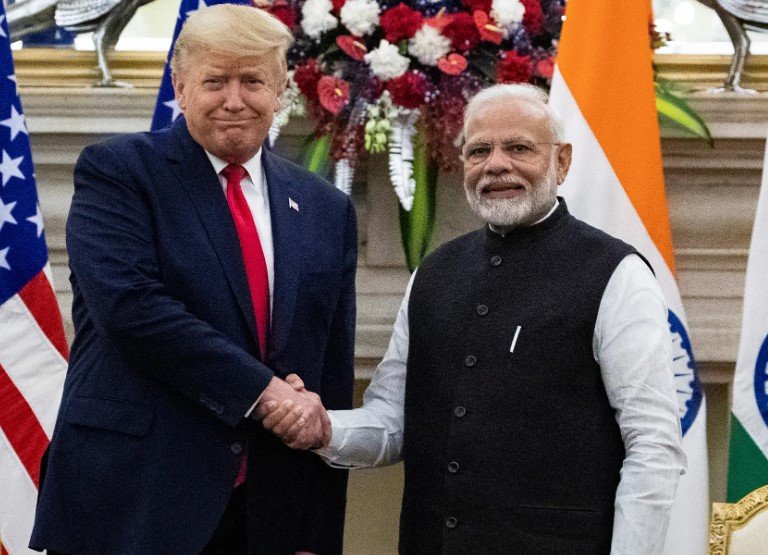Tensions over dairy and agriculture continue to stall an ambitious U.S.-India trade agreement, even as pressure mounts from Washington ahead of Trump’s July 9 tariff deadline.
In a high-stakes sprint to avert a bruising trade fallout, U.S. and Indian negotiators are deep in talks to craft a limited tariff-reduction deal. The sticking points? Cows and crops — or more precisely, unresolved issues around dairy access and agricultural imports, according to sources familiar with the discussions.
The timing couldn’t be tighter. President Donald Trump has set a hard July 9 deadline to finalize the deal, following his sweeping tariff agreement with Vietnam. Now India, already bruised by April’s tariff threats, is looking to shield its exports before the clock runs out.
Trump’s Tariff Diplomacy Puts India in the Crosshairs
Trump’s brand of economic diplomacy has always carried a bite. In early April, he unveiled the “Liberation Day” tariff initiative, slapping punitive duties on nations with what he called “unfair trade access.” India was among the first to feel the heat, with a 26% duty looming over its exports — only temporarily reduced to 10% to create negotiating room.
That room is shrinking fast.
Vietnam struck a deal just days ago, prompting Trump to praise Hanoi while warning other countries, including India, that time is nearly up.
“The message was loud and clear — make a deal or pay the price,” said a former USTR official who asked not to be named. “India knows it can’t drag its feet anymore.”

The Indian delegation, led by top officials from the Commerce Ministry, has remained in Washington since late June. While both sides have described the atmosphere as “constructive,” insiders admit that key issues remain far from settled.
Agriculture and Dairy: The Deal Breakers
The most persistent roadblocks are exactly where they’ve always been — American dairy and agricultural access.
India has long maintained strict restrictions on imported dairy, citing cultural and religious norms around animal feed. U.S. producers argue that’s just protectionism wrapped in tradition.
“They say it’s about faith, we say it’s about fair play,” said a U.S. dairy industry lobbyist.
Agricultural subsidies and market access are also major concerns. India wants safeguards for its millions of small farmers, many of whom live on the edge of poverty. But Washington is demanding lower tariffs and wider access for American grains, pulses, and processed foods.
Talks reportedly stalled over labeling requirements for dairy imports and limits on genetically modified crops.
-
Indian negotiators are resisting U.S. pressure to allow dairy sourced from animals fed on non-vegetarian feed
-
U.S. officials say excluding these products violates WTO norms and disadvantages American exporters
-
India argues the issue is non-negotiable due to local religious sensitivities
One Indian official, speaking off the record, described the talks as “moving, but not smooth.”
India Weighs Risks of Delay
New Delhi knows the stakes. A 26% tariff — if reinstated — would hit Indian exports across apparel, pharmaceuticals, automotive parts, and more. The U.S. is India’s largest export market, accounting for nearly $78 billion in trade last year.
But giving in too easily could backfire politically at home.
Prime Minister Narendra Modi’s administration is trying to strike a delicate balance — protecting domestic interests without alienating Washington. With elections due in several Indian states later this year, any perception of weakness on trade could carry a cost.
“You can’t be seen as caving to the U.S. just to avoid tariffs,” said political analyst Priya Mukherjee. “But you also can’t afford a trade war.”
Commerce Minister Piyush Goyal has remained tight-lipped about the latest progress but has previously said India is open to a “balanced and fair” deal.
Vietnam’s Deal Adds Urgency
Trump’s tariff truce with Vietnam has turned up the heat.
Under that agreement, U.S. tariffs on Vietnamese goods will drop to 20% — a significant shift from the earlier 46% threat. In exchange, U.S. products, including semiconductors and agriculture machinery, will enter Vietnam duty-free.
While details remain sparse, the message to India was unmistakable: strike a deal and avoid the penalty.
Vietnam, long seen as a manufacturing rival to India, is now gaining even more appeal among U.S. firms seeking alternatives to China.
A trade analyst with the Peterson Institute said the clock is now India’s enemy. “Vietnam got ahead of the curve. India’s still negotiating the curve.”
What the Numbers Say
Here’s a snapshot of where India–U.S. trade stands and what’s at stake if the new tariffs take hold:
| Indicator | 2024 Value | At Risk Due to Tariff Hike |
|---|---|---|
| Indian Exports to U.S. | $78.3 billion | Textiles, pharma, auto parts |
| U.S. Exports to India | $43.2 billion | Agriculture, aircraft, tech |
| Proposed U.S. Tariff on Indian Goods | 26% (currently 10%) | Could impact $35–40 billion worth |
| Indian Dairy Market Size | $162 billion | Mostly domestic; highly protected |
The Road Ahead
Nobody’s expecting a full-blown free trade agreement. That’s off the table. But even a mini-deal on tariffs would be a win — or at least a temporary Band-Aid.
Both sides appear motivated, but the timeline is brutal. There’s less than a week to hammer out concessions, frame the language, and get top-level signoff.
Trump has hinted that he won’t wait beyond July 9. If India doesn’t move, tariffs snap back.
“They’re playing a high-stakes poker game,” said one Washington-based trade advisor. “And the river card’s about to drop.”
